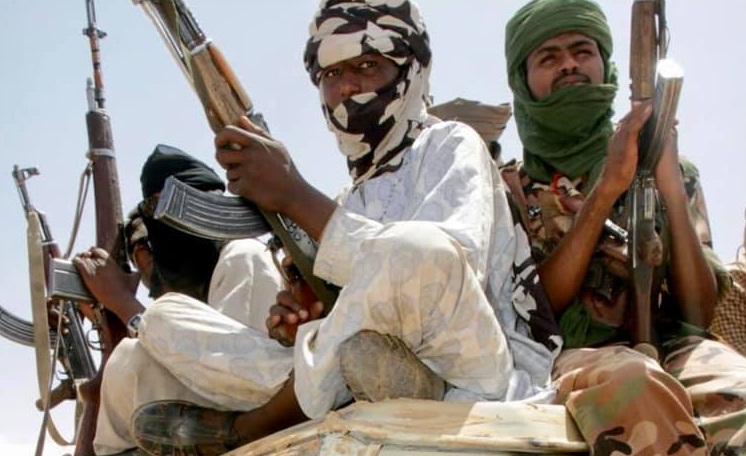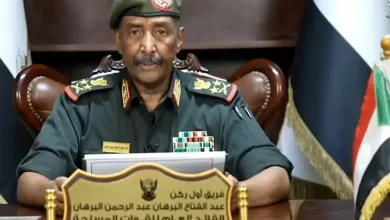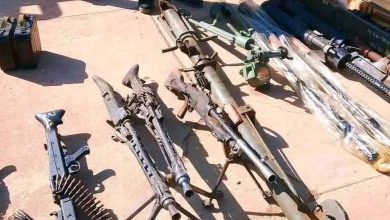Reports
The Rebel Militia: An Analysis of the Reasons Behind Repeated Defeats

Sudan Events – Agencies
The victories of the Sudanese Armed Forces and the supporting forces over the Rapid Support Forces (RSF) militia in recent battles in several combat fronts in Khartoum Bahri, multiple areas of the Gezira State, and North Darfur can be attributed to several reasons, including military, strategic, logistical, and moral factors.
Organization and Planning: The Sudanese Armed Forces have a well-developed organizational structure and long military experience in planning and executing combat operations. The Sudanese army has been operating for decades, and it possesses military personnel, including officers and soldiers, who have inherited skills and experiences over the years. Its structures include institutions, centers, and technical and intelligence observatories that enable and elevate the capacity for planning with long-term endurance. In contrast, the RSF militia has been drumming up war with the slogan “digging with a needle,” representing groups that resemble highway robbers, driven by tribal zeal and a desire for loot, often leading them to destruction with no deep strategic calculations or future vision.
Furthermore, despite the setbacks over the past 20 months, the Sudanese Armed Forces have a fleet, vehicles, and numerous advanced weapons with cutting-edge military technology that allows them to surpass the militia. Key examples of this include air force capabilities, armored vehicles, drones, and artillery of all kinds.
Qualified Leadership: In the Sudanese Armed Forces, there is competent leadership that fights alongside its soldiers even in besieged military areas, such as the General Command and the signal and armored units in Khartoum. In every confrontation, there is no tribal or ethnic distinction—only loyalty to Sudan. In contrast, the militia has united only for money or to take revenge on a specific ethnicity. Additionally, the national army has a central planning and directing command room with the ability to coordinate military operations on all fronts across Sudan and make swift, wise decisions. This leadership has clearly employed well-thought-out military plans suitable for the nature of the battle, such as controlling vital points and strategic sites, delivering crushing strikes to the militia, as seen in the Zirq area in North Darfur and quick strikes on the military shipments to Nyala airport where the militia receives arms.
Popular Support: The large local popular support for the Sudanese Armed Forces, due to the militia’s wartime behavior and widespread violations against citizens, has strengthened the fighting spirit of the army. In contrast, the militia has become isolated, with its slogans of democracy and the people’s interest now distant from reality. It has completely lost popular sympathy, even among those who once sided with it or remained neutral.
The active participation of supporting forces has also played vital roles that surpassed the army’s roles in areas like Darfur and South Kordofan, through the mobilized forces and joint forces of armed movements, as well as groups of veterans with prior combat experience. Meanwhile, local resistance in many safe areas has played a role in maintaining security within those regions and supplying other areas with trained volunteers. We also note that many businessmen, expatriates, and citizens have gathered and rushed to provide financial and material support to the Sudanese Armed Forces and volunteer brigades.
Mobilization and Logistical Support: Despite the economic exhaustion caused by the war and the exit of several states from the production cycle, both internal and external economic sources, supported by the Ministry of Finance and Minerals and the Central Bank of Sudan, enabled the Armed Forces to acquire sufficient logistical resources for long-term operations, including ammunition, food, and medical supplies.
Political Support: Alongside the popular support, the Sudanese Armed Forces have also received increasing political backing from national entities, blocs, parties, and figures who support the government in Port Sudan. Meanwhile, the political appeal of the militia or its backers has dwindled to the point of complete isolation. The militia has come to be seen by the people as responsible for the violations they have suffered. At the same time, Sudanese foreign movements have grown in recent periods, culminating in Russia’s use of the veto against the British draft resolution at the Security Council, as well as counter activity in the U.S. Senate, pressuring President Joe Biden to take a decisive stance against the militia and the state supporting it. Moreover, the role of Egypt and the gradual changes in the African Union’s positions and communication with major countries have become evident.
Loss of Power and Cohesion: Since the morning of April 15 last year, the militia and its backers thought the situation would be resolved by the end of that day, believing they could seize the state and its decisions completely and achieve a dramatic change in everything. However, the war has dragged on, and several factors have led to the resilience of the Armed Forces, aided by various sectors of the Sudanese population and the pivotal role of the joint forces and other regular forces. All of this has led to the depletion of the militia’s human and material resources, with a decline in fighting morale as the battle lengthened, and victory seemed either delayed or impossible. These reasons, along with several other interactions within a large and amorphous body like the militia, which has multiple sources of involvement and varying goals, have contributed to internal conflicts and defections from the battlefield. Many have returned to the areas they came from. Victories by the Sudanese Armed Forces and their supporters have revealed deep divisions within the RSF, including ethnic conflicts that reached the point of fighting and clashes with weapons. This has been repeated in many areas of the Gezira State, East Nile in Khartoum Bahri, and Soba, where conflicts and disputes have broken out, weakening their fighting capacity. The recordings of Abu Jalha, Al-Safna, and other militia leaders provide clear evidence of these divisions.



